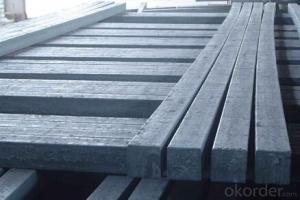Steel Flat Bar: A Modern Marvel in Design
From towering skyscrapers to intricate sculptures, the role of steel flat bar in modern design is nothing short of transformative. Its versatility, strength, and durability make it a favorite among architects, engineers, and artists alike. Let’s dive into the world of steel flat bar and explore its impact on contemporary design, with a touch of personality and a pinch of passion.
The Backbone of Modern Architecture
Steel flat bar has become the backbone of modern architecture. Its robustness and flexibility allow architects to push the boundaries of design, creating structures that were once deemed impossible. The Burj Khalifa, the tallest building in the world, is a testament to the strength of steel. It’s not just about height; steel flat bar enables the creation of complex geometries that defy gravity and inspire awe.
Imagine standing at the base of the Guggenheim Museum in Bilbao, Spain, and gazing up at its curving titanium-clad facade. The structure’s fluid form would not be possible without the underlying steel flat bar framework. It’s the unsung hero that supports the artistry of Frank Gehry’s design.
Aesthetics and Functionality in Harmony
The beauty of steel flat bar lies in its ability to blend aesthetics and functionality. It’s not just about being strong; it’s about enhancing the visual appeal of a design. Steel flat bars can be galvanized, painted, or left to weather, offering a range of finishes that complement any architectural style. Whether it’s a sleek, industrial look or a warm, rustic feel, steel flat bar can deliver.
In urban landscapes, steel flat bars are often used in bridge construction, where they not only provide the necessary support but also add an elegant silhouette to the city’s skyline. The Millau Viaduct in France is a prime example of this, with its cables and steel flat bars working together to create a breathtaking view.
Innovations in Construction Techniques
With the advent of new technologies, the use of steel flat bar has evolved. Prefabrication and modular construction techniques have made it easier to incorporate steel flat bars into designs, reducing construction time and costs. This innovation has led to a surge in creative designs that maximize the potential of steel flat bar.
Prefabricated components made from steel flat bars can be assembled quickly on-site, allowing for more complex and dynamic structures. This has opened up new possibilities for sustainable construction, as these components can be easily disassembled and reused, reducing waste.
Sustainability and the Future of Design
Sustainability is at the forefront of modern design, and steel flat bar plays a crucial role in this. Steel is a recyclable material, and its use in construction contributes to a circular economy. The longevity of steel flat bars means that they can be reused in multiple projects, minimizing the environmental impact of construction.
Moreover, the strength of steel allows for thinner structures, reducing the amount of material needed for a project. This not only cuts down on costs but also aligns with the principles of sustainable design. The use of steel flat bar in green buildings is a clear indication of its commitment to the environment.
Artistic Expression and Steel Flat Bar
The artistic community has also embraced the use of steel flat bar. Sculptors and installation artists find the material’s malleability and strength to be ideal for creating large-scale works. The Tate Modern in London, for instance, showcases numerous installations that utilize steel flat bars to convey powerful messages and evoke emotions.
Steel flat bar has become a canvas for creativity, allowing artists to push the limits of their imagination. Its ability to be both a structural element and an artistic medium is a testament to its versatility.
Conclusion: The Enduring Legacy of Steel Flat Bar
In conclusion, the role of steel flat bar in modern design is multifaceted. It’s not just a material; it’s a catalyst for innovation, a symbol of strength, and a canvas for artistic expression. As we look to the future, the steel flat bar will undoubtedly continue to shape the way we live, work, and create. Its enduring legacy is written in the steel structures that dot our landscapes and the creative works that inspire us every day.

